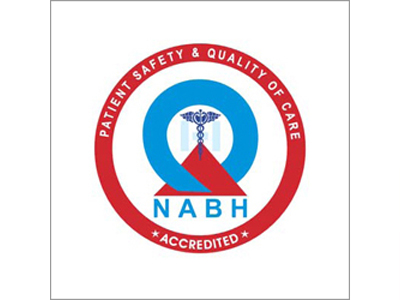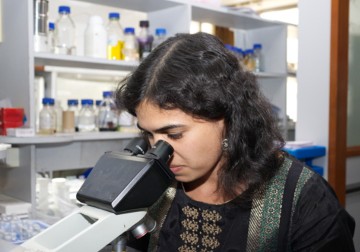Mucous membrane pemphigoid (MMP) in the conjunctiva (mucous membrane of the eye) is called ocular MMP (OMMP) and can lead to conjunctival scarring and, eventually, blindness. The diagnosis of OMMP often involves a biopsy, among which a key indicator is the accumulation of self-targeting antibodies, observed via immunofluorescence. For improved diagnostic accuracy, it is essential to understand what factors influence whether a biopsy will be MMP-positive or negative. Dr. Swapna Shanbhag, a clinician-scientist at LVPEI, talks about her research paper on exploring clinical factors that affect biopsy positivity in conjunctival tissue using direct immunofluorescence (DIF).
As a clinician, what are your research interests and how did you get into your area of expertise?
My research is focused on ocular surface disorders such as ocular burns, ocular sequelae secondary to Stevens-Johnson syndrome, and OMMP. Fortunately, I had Dr. Sayan Basu as my mentor during my fellowship at LVPEI (2014–2016). I was not aware that one could specialize in ocular surface disorders until I arrived here. Since Dr. Basu is an expert in this area, working with him gave me the opportunity to specialize in this subject. I also served as a research fellow at the Massachusetts Eye and Ear Institute in Boston from 2016–2018, which expanded my knowledge in this field. Although it is a difficult field to work in, I find the challenge a welcome change of pace from routine cornea cases.
How does what you see in the clinic impact your research choices?
Though rare, ocular surface disorders can cause corneal blindness, and diagnosing these conditions correctly is the key. Many ophthalmologists or even cornea specialists may not see the variety of ocular surface disorders that we see at LVPEI during their training. We receive referrals for the diagnosis and treatment of these conditions from all over India. It is our responsibility to disseminate the knowledge we have gained treating patients with ocular surface disorders. Therefore, my research focuses on establishing protocols for appropriate diagnosis and treatment for these conditions.
Affordability is also a major issue with ocular surface disorders. Patients with MMP need multiple surgeries and can have the disease affect other organ systems. By the time they reach us, they often run out of money. For this reason, my mission is to help prevent the gradual corneal blindness that ocular surface disorders can lead to, through early detection and efficient treatment.
How did this project start? What were some of the questions that drove you into this research?
I noticed that many patients would get clinically diagnosed with OMMP and advised for systemic immunosuppression without a biopsy confirmation. The test gets skipped often because the likelihood of a positive biopsy result has been historically low. However, this raises questions, for both the physician and the patient, regarding whether the patient genuinely has MMP. So, the crucial query that arose was, ‘Why is the biopsy positivity rate so low?’ Following a discussion with Dr. Sayan Basu, our group began examining cases involving conjunctival biopsies. For the pathology lab to process the biopsy samples on time, we also optimized the workflow. That was the project's evolution.
Indirect immunofluorescence can give a stronger fluorescent signal. Why is direct immunofluorescence used in a conjunctival biopsy?
(Dr. Saumya Jakati, a pathologist at LVPEI and one of the authors of the paper, responds.)
Dr. Jakati: While indirect immunofluorescence has better sensitivity and amplified signal intensity for better visualization, DIF is a simpler technique, requiring less time to perform. The decreased possibility of cross-reactivity with other antibodies, which lowers the likelihood of non-specific ‘background staining’ is an additional advantage of DIF. High antibody specificity in immunofluorescence is crucial for avoiding false-positive biopsy results.
Why is there such a complex interplay between DIF positivity and the clinical profile of a patient? Do you think there is scope to narrow the sensitivity range (30% to 80%)?
DIF positivity depends on several confounding factors, one of which is the area from which the biopsy sample was taken from. There is disagreement over whether the sample should come from the whole uninvolved site or from a junction between an involved (diseased) and uninvolved site. A negative biopsy result is also more likely if the sample contains cicatrized (scarred) tissue or tissue with active inflammation. Errors or variations from the numerous pathologic process stages are additional considerations. Each of these elements has the potential to influence DIF sensitivity. It is crucial to recognize these factors, come to a consensus, and lower the likelihood of mistakes.
Previous research showed the antibodies IgA or IgG as the dominant marker for biopsy positivity. But your study found the protein C3 to be the most sensitive marker. Why?
Upon examining the biopsy data from our investigation, numerous samples tested positive for just the C3 protein (a key player in the innate immunity of vertebrate animals). Although a previous study had established that isolated C3 positivity is a sign of OMMP, we were not aware that this could be so common. Furthermore, almost all of the MMP research that has been done to date has focused on people in Europe and America. The molecular signs of MMP in Asian populations—particularly South Asians—are poorly understood. Ours is one of the few studies on MMP coming out of Asia, and our work is groundbreaking in that regard.
How can this paper's findings improve the diagnostic accuracy of OMMP?
This paper has bolstered our strategy at LVPEI for the diagnosis of ocular MMP. False-negative biopsies can get a patient misdiagnosed as not having MMP, costing us the window of opportunity where systemic immunosuppression can be initiated, leading to irreversible corneal blindness.
We knew that biopsy negativity is related to scarring. Now that we have identified age and disease severity as major factors that influence biopsy positivity, patients need to be biopsied at an earlier age—as soon as forniceal shortening is identified—prior to further ocular scarring. Bilateral biopsies (both eyes) can improve diagnostic accuracy. Both eyes are unlikely to produce a false negative result. In case a patient presents asymmetrically (exhibiting MMP symptoms in one eye), it is better to biopsy the unaffected or less-affected eye, since it has less scar tissue.
Our research has also demonstrated that the use of topical or systemic immunosuppressive medications, such as corticosteroids, prior to biopsy may not affect the biopsy results negatively. So, even in cases where a patient is already on immunosuppression, physicians should still recommend a conjunctival biopsy.
For future initiatives, we would like to collect conjunctival and oral mucosal samples at the same time, to improve diagnostic precision, conduct comparative research, and gain a deeper understanding of the condition.
Dr. Swapna S. Shanbhag spoke to Sayantan Mitra, Science Writer, LVPEI. Read more about her research here.
Citation
Jain N, Jakati S, Shanbhag SS, Basu S. Direct Immunofluorescence Findings and Factors Affecting Conjunctival Biopsy Positivity in Ocular Mucous Membrane Pemphigoid. Cornea. 2023 Oct 3



